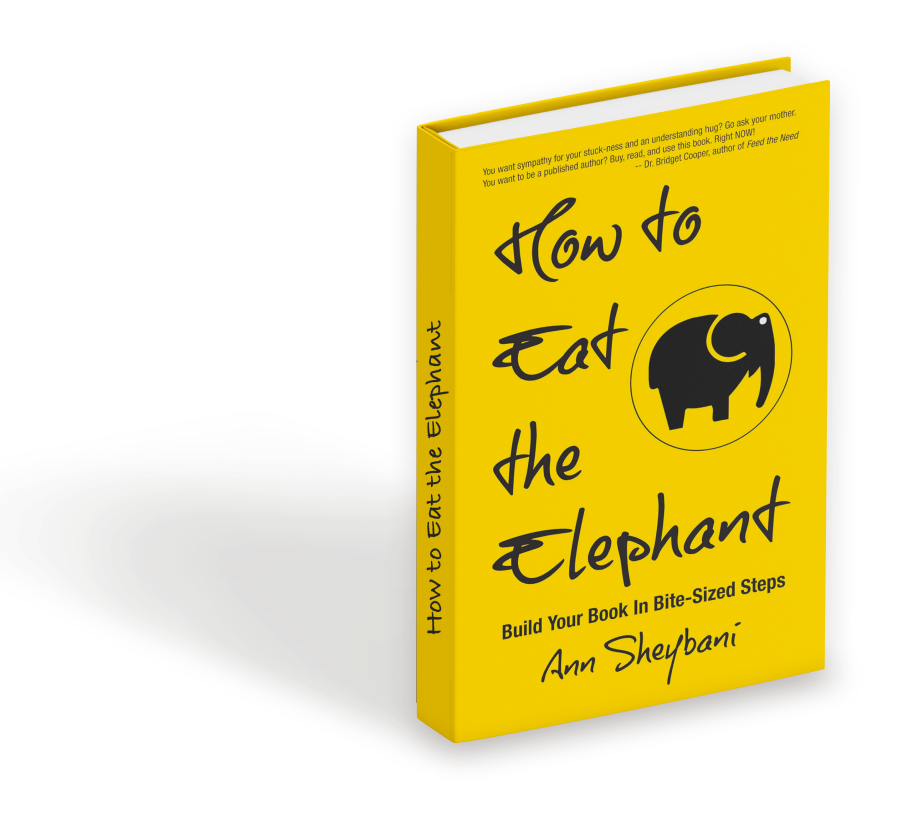As a chemistry major who really shouldn’t have been a chemistry major for a whole host of reasons, I nearly lost my mind with physical chemistry. One exercise that I found particularly punishing was proving “proofs” for quantum theorems. I mean, how was I supposed to prove something that had already been proven by someone who took years to come up with this theorem, knew how to do so, and, more importantly, cared enough to do so? When my friend questioned the teary weekends I’d devoted to this futile exercise, she felt compelled to point out the step-by-step answers written in the back of the textbook in an appendix.
As in, why would you waste your time reinventing the wheel?
Why go through all that angst when the solution was right there?
So, I get why people ask me for book templates. If you have no idea how to write a book, why not have the step-by-step procedure, the what-goes-where, to make something you’re not naturally inclined to do so much easier? Less tear-streaked?
I’ve had a lot of mixed feelings about providing templates, even though I understand the sheer joy of having the solution laid before me to save me hours of, well, rage. I just know their limitations. I mean, I’m guilty of wanting the easy way out, despite what my history might lead you to believe, but I’ve absolutely crucified templates—case in point, Stu McClaren’s step-by-step webinar formula. In my hands? Repetitive robot. Dismal results. Never, ever, again.
The Problem With Templates (And Why I Made Them Anyway)
Here’s what most template creators won’t tell you: templates are structural guides, not fill-in-the-blank worksheets. When people treat them like Mad Libs (raises hand)—just plugging in their own words into someone else’s sentences—the results are disastrous. You become a repetitive robot, your unique expertise flattened into generic business-speak. (I mean, it’s not natural to repeat the same “your outcome” sentence 457 times in one document, be it a webinar script or a book. Ask me how I know.)
But starting from absolute zero is equally problematic. Staring at a blank page wondering how to organize 200 pages of content? That’s how books never get written. That’s how brilliant consultants, coaches, and business experts keep their expertise locked in their heads instead of leveraged in a book.
So I went ahead and created a bunch of templates that will show you how to write books in various genres. I’ve analyzed and dissected bestselling books so you can model them. But I’ve also walked you through precisely how to use these templates so you don’t sound like you’re trying to be someone or something that you’re not. Particularly one so infuriatingly repetitive.
Because you don’t want that.
Seven Templates, Zero Excuses
In Brick by Brick: The No Bullsh*t Guide to Building Books That Get Read, I’ve included templates modeled after successful books in various genres—from Brené Brown’s research-based authority books to The Psychology of Money‘s story-driven insights, from method-based instruction manuals like KonMari to transformation memoirs like Educated.
But here’s what makes these different: I don’t just hand you a structure and wish you the best of luck. I show you how to work with templates effectively—how to analyze your existing content, sort it into “bricks” (stories, frameworks, case studies), assess quality, and map your bricks to template slots.
You’ll learn what to do when content doesn’t fit naturally. When to modify the template. When to abandon it entirely. Because not every book needs a rigid structure—and knowing the difference between when to use a template and when to build organically is crucial. Nay, vital.
Course Correct Before You Publish
These templates also allow you course correct if you’ve gone down a rabbit hole or to compare your manuscript structure to proven models before you hit the publish button. Think of them as your architectural blueprint. When you’re staring at a pile of content bricks—blog posts, case studies, frameworks, stories—you’ll know exactly what to do with them all.
The 14-chapter template I detail in the book works for most prescriptive nonfiction. But I also show you when this template won’t work, how to modify it for your specific expertise, and what content balance you should aim for.
Build It Brick by Brick
The beauty of this approach is that you’re not trying to write an entire book from start to finish—which paralyzes most people before they type the first sentence. You write one brick at a time. One story. One framework. One case study.
Each brick is manageable, completable, and moves you forward without the paralysis that comes from contemplating the enormity of “writing a book.”
So yes, I finally created templates. Not because they’re magic bullets, but because they’re incredibly useful tools when you understand both their power and their limitations. When you know how to adapt them to your expertise instead of cramming your brilliance into someone else’s box.
Because the goal isn’t to sound like everyone else. The goal is to get your expertise out of your head and into a book that actually gets read—without spending two years wandering around like a confused tourist in a Moroccan bazaar.
Ready to start building? Access the complete set of templates in Brick by Brick: The No Bullsh*t Guide to Building Books That Get Read, coming to the market soon.


